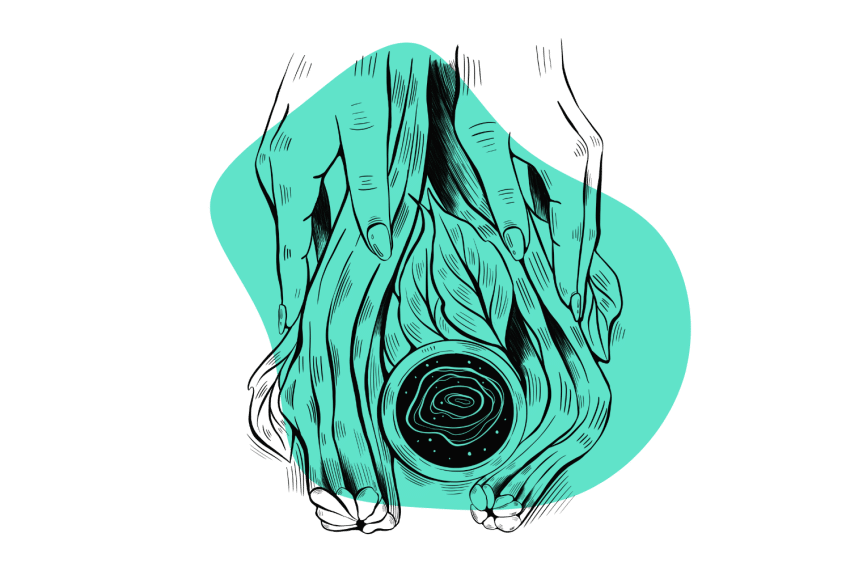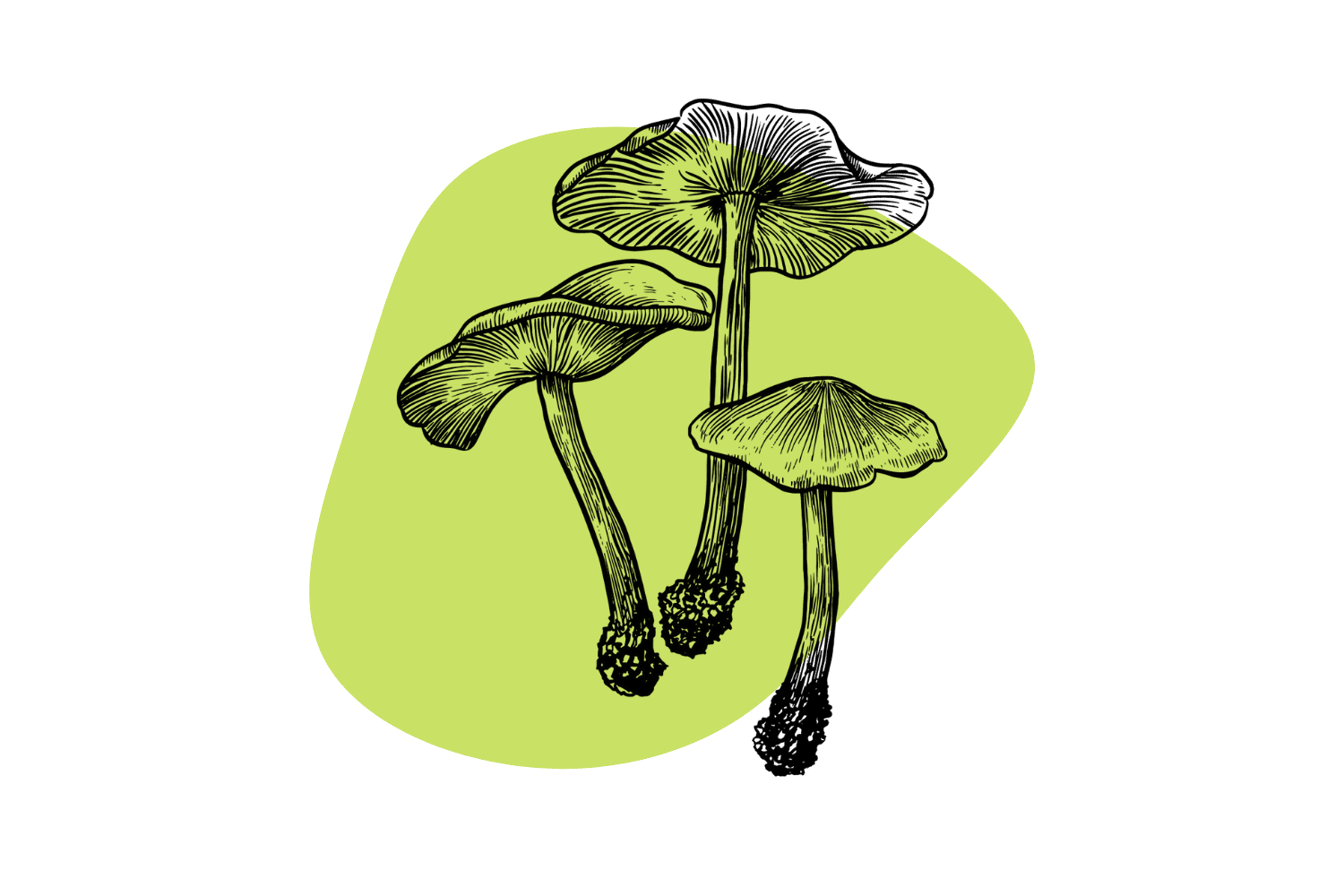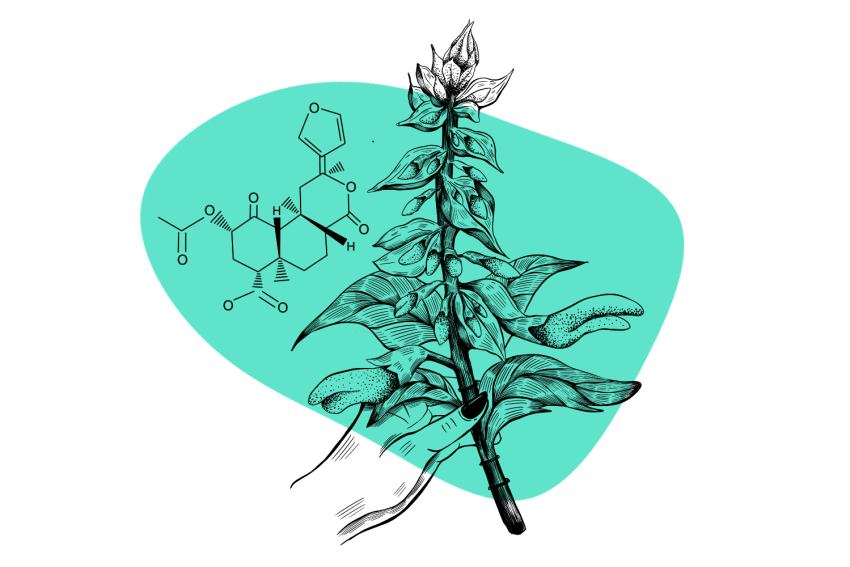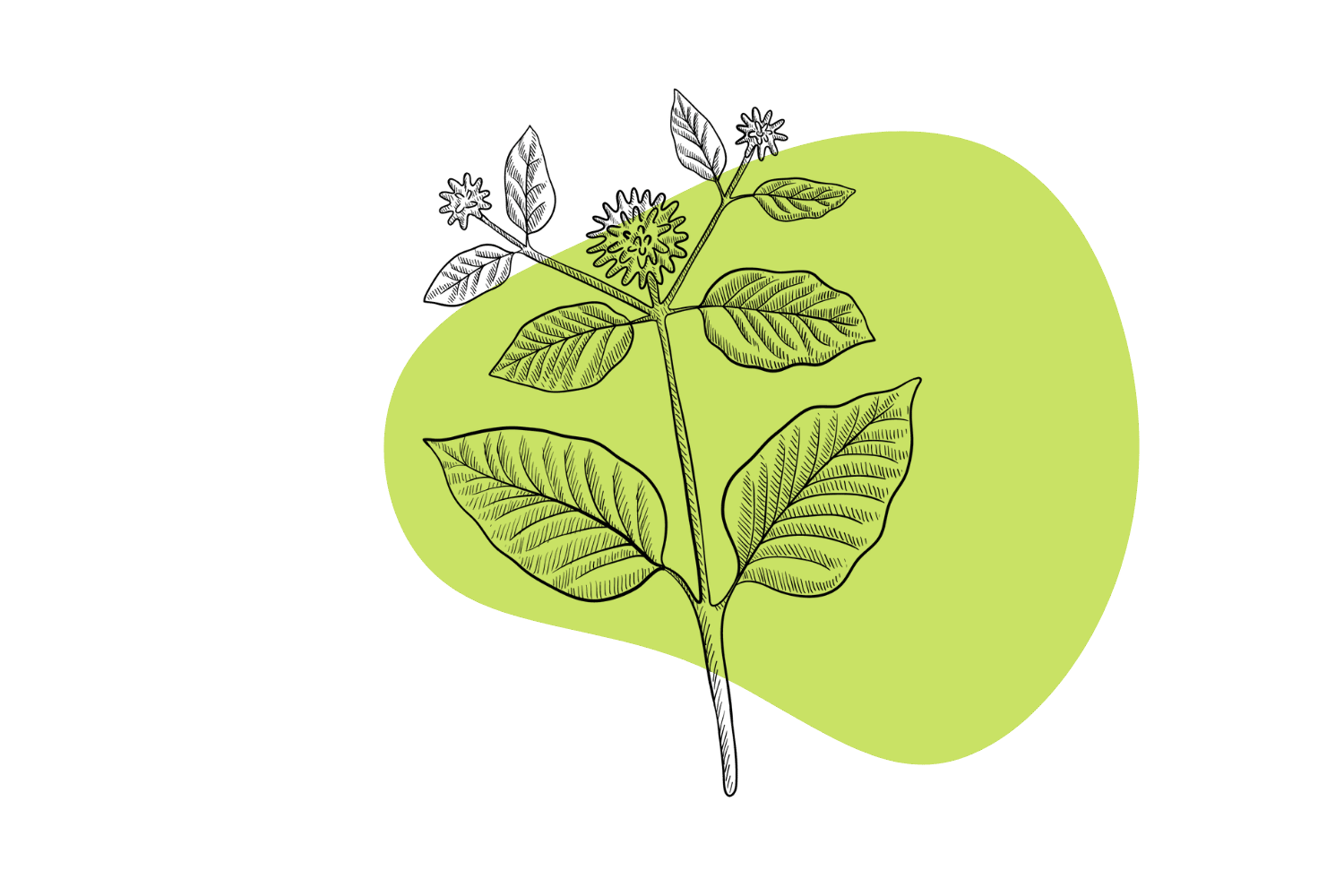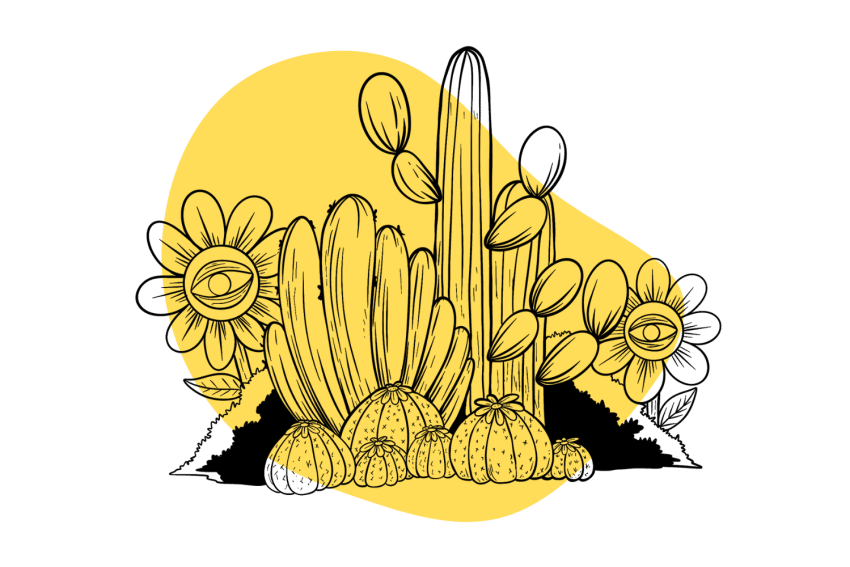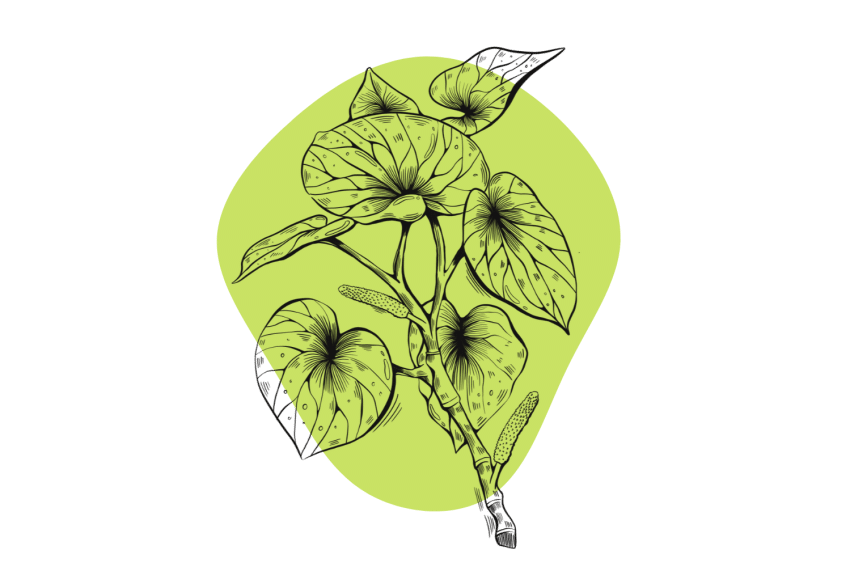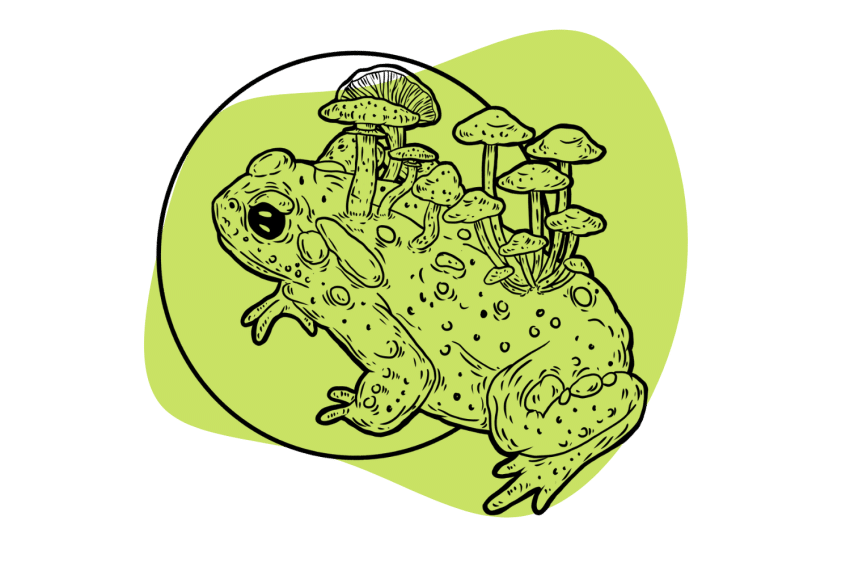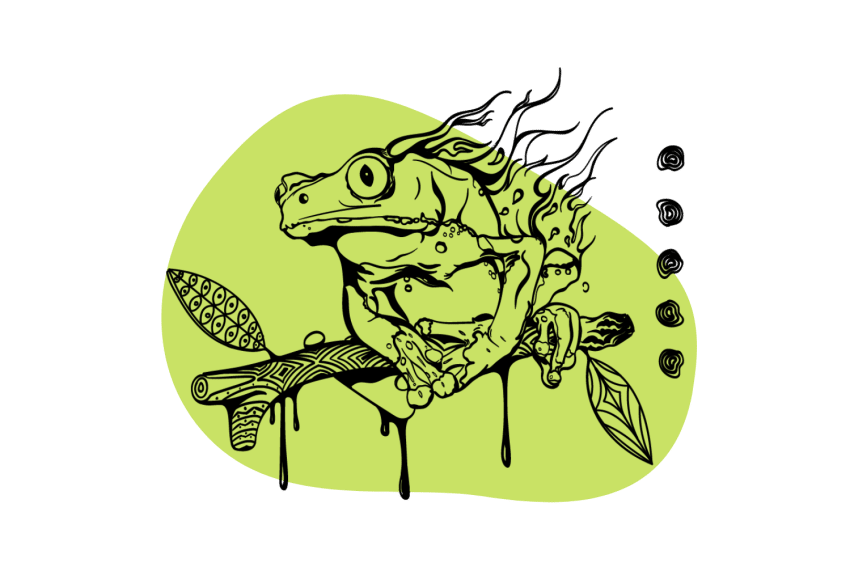Why Did Plants & Fungi Evolve to Produce Psychedelics?
Psychedelic drugs evolved 60 million years ago, but the biggest question remains: why? We explore the science of natural psychedelics. 🌱🍄🌵
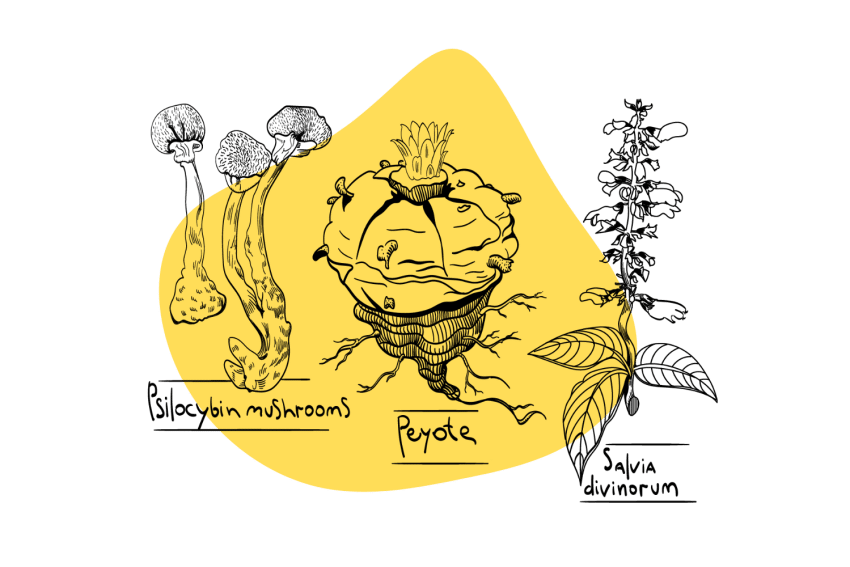
It’s hard to look at something and see the story behind it — especially when it predates humanity by tens of millions of years. Trees, mushrooms, animals, and everything else around us are the result of millions of years of evolution, extinction, and adaptation, and everything seems to have its place.
Trees evolved to grow leaves to collect more sunlight, lionesses developed fangs to take down their prey better, and even the rocks, minerals, and land masses of our world have morphed and changed drastically. To us, everything seems to have fallen where it should, but we still don’t understand why some animal and plant evolutions happened or what advantages they brought.
Let’s break down some of these theories and dive deeper into the evolution of psychedelic drugs.
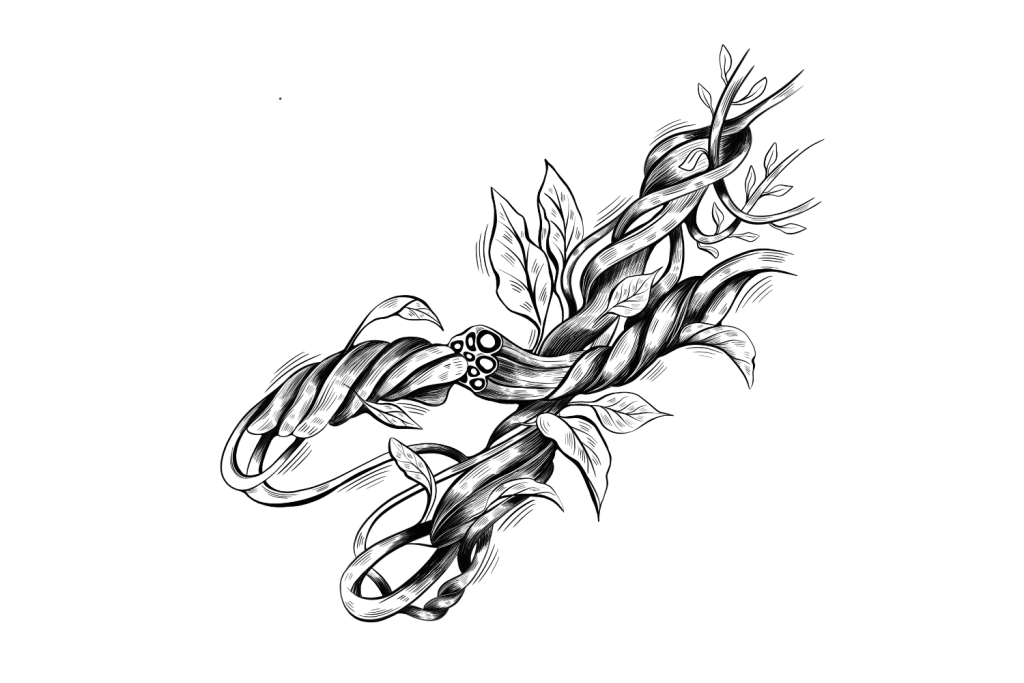
Why Did Psychedelic Drugs Evolve?
One of the adaptations researchers have long found puzzling was the development of drugs in plants and fungi. Some argue psychedelic drugs sprung into existence as an attempt at controlling pests and insects, but others showcase how man, animals, and insects seek them out and feast freely.
The other option swings in the opposite direction and suggests it was a matter of spore and seed dispersal through the dung of those feasting on it. While there’s merit to this, it again doesn’t seem to be the conclusive answer we want.
It’s likely a mixture of both, or it could even be a matter of chance or have initially served a purpose that is no longer a concern. Perhaps there was a predator for which muscarine, psilocybin, mescaline, or other natural psychedelic alkaloids were well-equipped to defend.
Three leading schools of thought exist on why psychedelic drugs sprang into being:
- As a form of pesticide/insecticide
- To lure animals in
- As a matter of chance or an extinct purpose
Each of these theories feels incomplete, and it’s likely a mixture of all three in some sense.
Plants and fungi have been making chemicals intoxicating to humans since long before there was anything resembling a “human.” The mescaline-containing cactus Lophophora williamsii (AKA peyote) dates back to the middle of the Pliocene era (~3.5 million years ago [1]).
Psilocybin-containing “magic mushrooms” likely popped up 10–20 million years ago. They did so after splitting from muscarine-containing fungi like Amanita muscaria, which had been around for a mind-boggling 60 million years already [2].
Even Cannabis split from Humulous (hops) 27.8 million years ago [3]. For reference, our ancestors didn’t walk upright until 6 million years ago, and Homo sapiens did not exist until around 300,000 years ago.
While we don’t know why they evolved, they didn’t do so with humans in mind — or, rather, mycelium.
Psilocybin and muscarine both evolved independently from a different family of fungi by sharing their genetic material with other strains of mushrooms. This implies the mushroom found these compounds advantageous and worthy of transfer to other species.
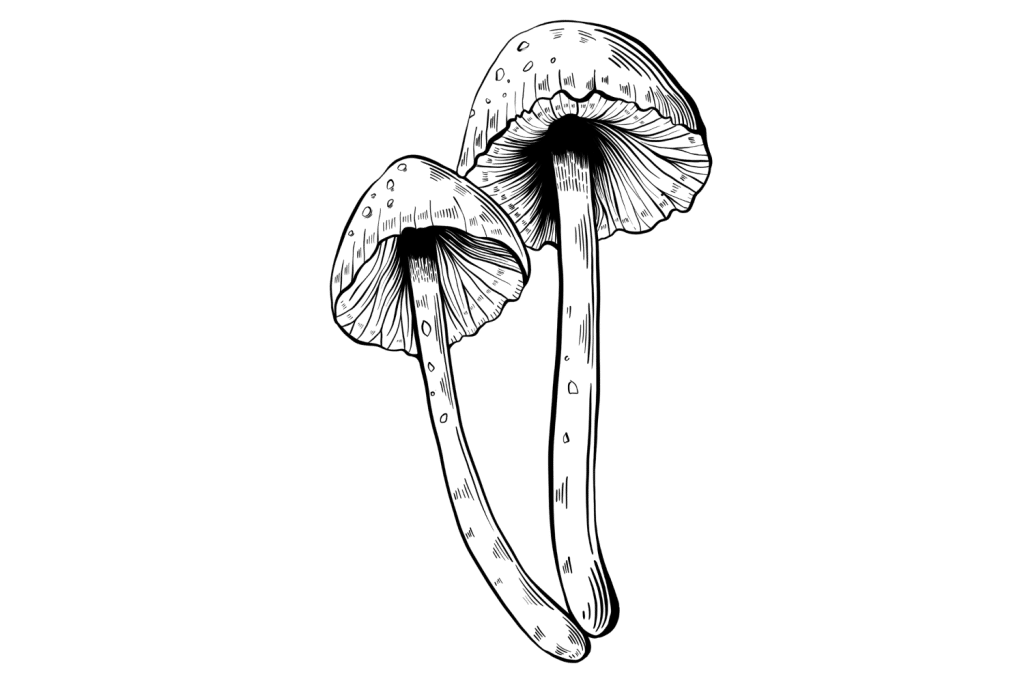
Did Psychedelics Evolve as Pesticides?
For some insects and animals, the alkaloids we enjoy from plants and fungi may have the potential to kill. Since mushrooms and insects both feed on decaying material, it would make sense to deter the competition in the name of securing more food for yourself.
Psilocybin and muscarine enter the scene during two different times of excessive food sources — within 10 million years or so of a major extinction event killing over 85% of life on Earth. Decaying flora and fauna, along with the dung from the animals lucky enough to make it out alive, comprised an all-you-can-eat buffet for fungi (and the growing number of insects on the planet.)
It makes sense for mushrooms to evolve to keep as much of the food for themselves as possible, even in times of plenty. One of the clearest examples of a plant evolving an intoxicating chemical as a form of pest control is cannabis.
Pinene, limonene, and myrcene are all abundant in cannabis in various amounts, contributing to the total effect of different strains. These three terpenes also accumulate in conifer trees and are deadly to many pests the tree would want to keep away [4]. They likely serve a similar purpose for the cannabis plant.
Our biology is infinitely more complex than the initial targets of these chemicals if this is the case. It’s possible all psychedelic drugs initially started as a means to repel insects and animals as opposed to luring them in.
This doesn’t account for the ones that seek out the mushrooms and eat them without fear, however.

Do Psychedelics Mess with the Minds of Insects?
Another possibility for how these drugs could have been advantageous to mushrooms is less in their ability to kill insects and more in their distraction capabilities. One paper points out that this would have been especially beneficial when dealing with social insects like termites [5].
As a defense mechanism, psilocybin, muscarine, and other psychedelic compounds may not have sought to stop pests dead but, rather, to confuse them into turning around and flying away. One study involving lysergic acid diethylamide (LSD) — which originally came from a naturally occurring fungus on grain — found it to have a similar level of activation on these receptors for invertebrates as humans [6].
Of course, we can’t possibly know this for sure — just consider how hard it is for a fellow human to describe a psychedelic experience, let alone try to find out from a fly. Still, it seems likely insects would experience at least some sort of effect from it, and whether they enjoyed it or not, it would stop them from eating away at the mushroom.
If this is the case, muscarine and psilocybin could be pesticides while also luring in other insects and animals to confuse them and leave the food source.
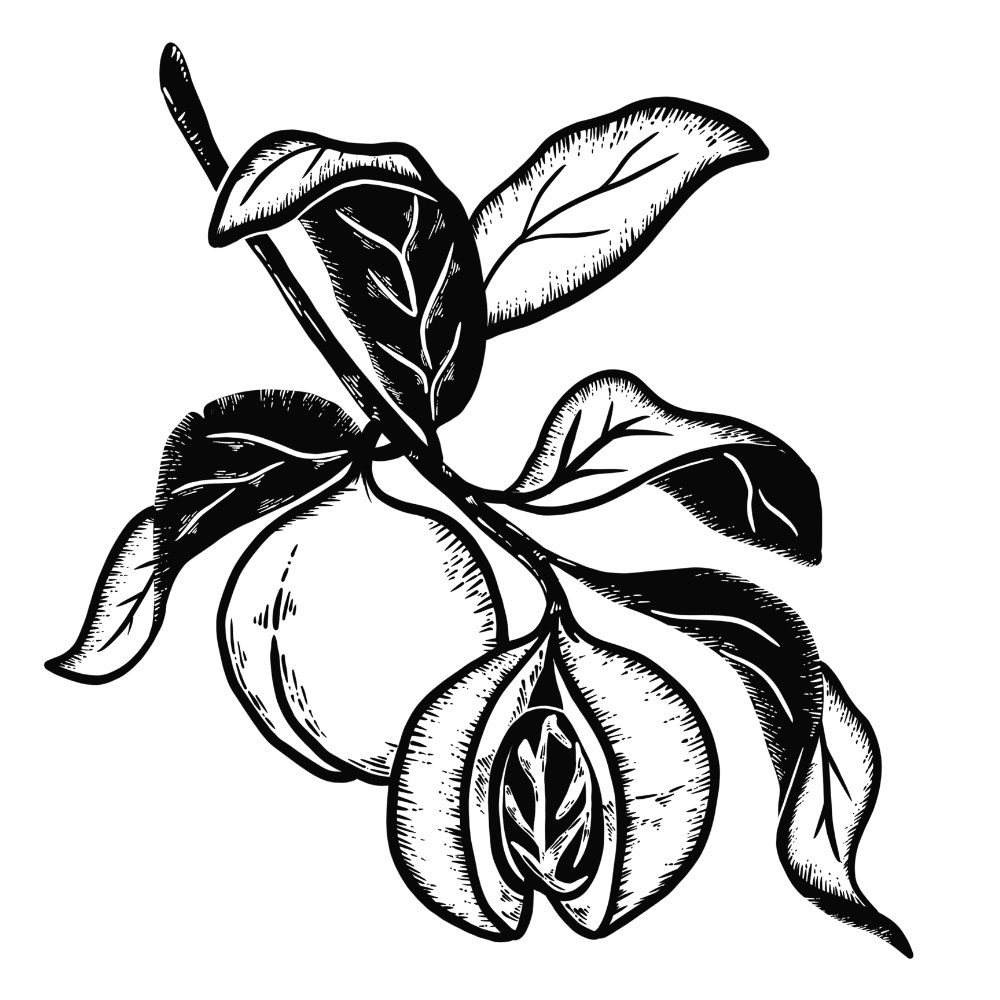
Psychedelic Molecules to Help Spread Plants & Fungi
Mushrooms fruit mainly to spread their spores and benefit greatly from animals eating them. After an insect or animal does so, it wanders off, passing the spores through its feces as it moves far away from the parent mushroom.
One study even found that some species of flies might use the fruiting bodies of psilocybin mushrooms as food for their larvae [7]. As they state, this provides “evidence that psilocybin does not confer complete protection from insect[s].”
While this is a single species of fungus gnat, it belongs to the same family as a common housefly, suggesting more is at play. The researchers hypothesize there is a mutual benefit between insects and fungi as opposed to an adversarial one.
The mushroom offers larvae the fuel they need to transition to adulthood, and the gnat spreads the spores when it’s old enough to fly away. The benefit to humans and other animals is a bit more obvious — several animals (humans included) seek out these intoxicating substances and will eat and eventually pass them.
Reindeer reportedly seek out Amanita mushrooms and, after eating them, will become excited, running and jumping around. Sometimes they run around aimlessly, leap, or make weird noises while under their influence.
If muscarine’s purpose is to deter animals from eating it, it’s not doing a very good job. Ditto with psilocybin, which has led to people growing mushrooms, cross-breading them, and more.
These chemicals may serve a different purpose than they did in the past, but the serotonin receptors they communicate with evolved long before either (around 670 million years ago) [8].
Did Psychedelics Evolve Out of Chance?
While there’s likely some luck involved in the evolution of these molecules, there’s a great deal of evidence for their being beneficial. Psilocybin, muscarine, and mescaline all occur in multiple sources — some aren’t even restricted to fungi or plants.
Technically speaking, most of evolution is a result of chance, and it’s possible that muscarine appeared by chance, but it’s unlikely that the mushroom didn’t find it useful. It would be highly unlikely for this to be the case for a compound that has lived through 60 million years while co-evolving in unrelated species.
For whatever reason, the novel alkaloids beneficial to these plants and fungi were important enough to transfer and bolster over billions of generations. The bold existence of psychedelic drugs makes a strong argument for their usefulness to the host.

When Did Psychedelics First Evolve?
Every natural drug we consume today existed for millions of years before modern (sometimes even ancestral) humans arrived at the party. The first psychedelic drug evolution we know of is muscarine from around 60 million years ago.
Psilocybin broke off from muscarine, and mescaline became the cacti-kingdom’s answer to a psychedelic compound on its own for unknown reasons thereafter. Cannabis came around shortly before psilocybin with a pretty strong case for insect and pest control.
Let’s zoom in a bit and uncover a world we couldn’t possibly recognize.
The Landscape Psychedelics Evolved In
To understand the reasoning behind mushrooms creating these substances, it’s important to first consider the world in which these drugs evolved. Around 420 million years ago, the planet was filled with dead plants and animals, and for the next 70 million or so years, fungi were the rulers of the planet.
At this time, plants were relatively new, and the planet was recovering from a series of extinction events responsible for ending the stories of 85% of all life on Earth. Fungi had more food than it could handle, and this became the golden era for the kingdom to begin decaying the dead and dying matter on the planet.
In 1859, archeologists discovered several “logs” fossilized in rock from around this period, with the largest being nearly 29 feet tall. Though still a matter of debate, many now accept these as fungal bodies that would have been dominating features of the world at the time [9].
By this point, the fungal kingdom already had a delicate relationship with the rising plant life on the planet, having provided nutrition for the early evolution of plants [10]. Fungi work alongside other kingdoms of the planet more than any other — it helps our gut process food, our plants receive nourishment, and so much more.
Three hundred million years ago, all major classes of fungi were likely already present [11], maintaining existence underground throughout a series of collapses and extinction events. Muscarine would evolve around 6 million years after the asteroid wiped out dinosaurs (~66 million years ago) to a world of recuperating vegetation, small mammals and animals, and growing numbers of insects.
Psilocybin, coming in somewhere between 10–20 million years ago, would have sprung up during or shortly after a string of extinction events in the Miocene era. Peyote shows up right around the first evolution in our genus — homo — enters.
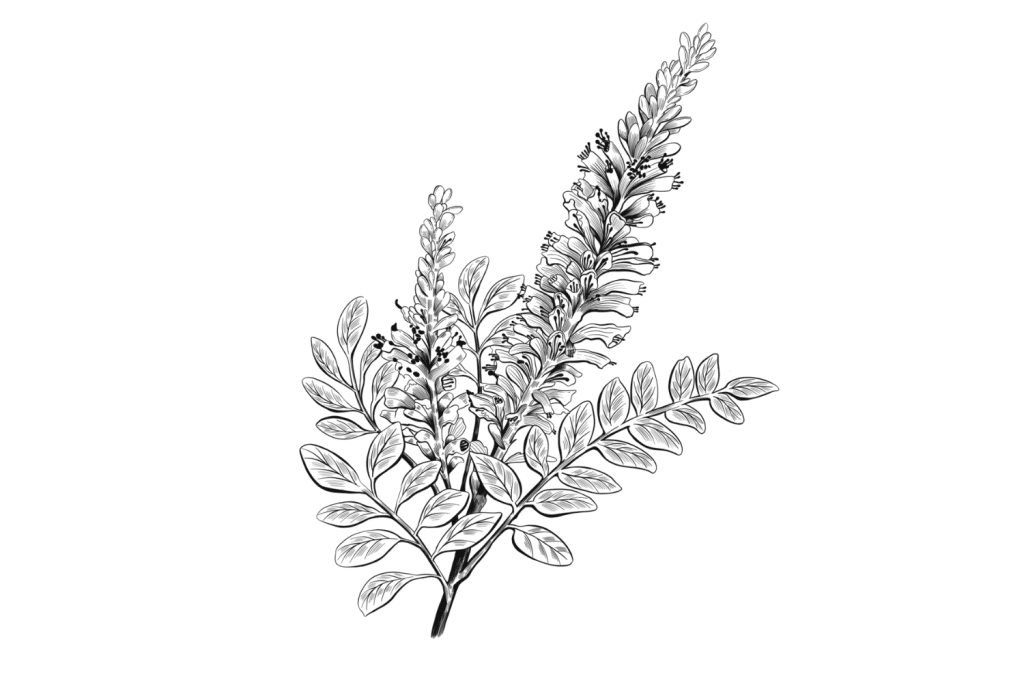
Did Psychedelics Play a Role in Human Evolution?
As far as human history goes, evidence for the use of peyote goes back to 3,780–3,660 B.C.E. [12] Magic mushroom use dates back even further, with one particular piece of cave art dating the use back to 7,500–5,000 B.C.E. [13]
For reference, the invention of writing took place around 3,400 B.C.E., meaning our evidence of their use predates our capability to record it. As such, it likely extends far beyond what we have proof of.
Terence McKenna used to speak frequently on his “stoned ape theory,” which questioned whether psychedelics were responsible for the evolution of humanity. He theorized that our religions, means of communication, and ability to empathize with each other could all find root in the mystical experience of psychedelics.
It’s very unlikely that such a simple explanation will fully apply to something as complex as 2.8 million years of becoming human, but it could point to something.
Recently, the journal Frontiers in Psychology published an article on the topic, stating:
Hominin entry into the socio-cognitive niche cannot be explained in terms of a single causal factor, a critical adaptive breakthrough (e.g., bipedality, tool-use, cooking, or even psychedelic use), but instead through positive feedback loops among various aspects of hominin life. We propose psychedelics acted as an enabling factor in human adaptation and evolution. This means psychedelic use may have established positive feedback loops with core features of the evolving hominin lifeway [14].
Without the ability to travel in time, we can’t answer this question, but it seems highly likely our early ancestors were aware of and ate psychedelic fungi. This may have played an important role in our understanding and adapting to the world around us.
List of Plants & Fungi That Produce Psychactive Compounds:
| Name | Botanical Name | Active Ingredients |
| Acacia | Acacia spp. | quercetin, kaempferol, catechins, tyramine, gallic acid, ellagic acid |
| African Dream Herb | Entada rheedii | entadamide a, entadamide b, quercetin, kaempferol, isorhamnetin, saponins, β-sitosterol, stigmasterol |
| Areca Nut | Areca catechu | arecoline, arecaidine, guvacoline, tannins, catechin, epicatechin, quercetin |
| Ayahuasca | Banisteriopsis caapi | harmine, harmaline, tetrahydroharmine |
| Bay Bean | Canavalia rosea | l-canavanine, stizolobin, stizolobin methyl ether, n,n-dmt, 5-meo-dmt, quercetin, kaempferol, isorhamnetin |
| Bitter grass | Calea zacatechichi | calein a, herniarin, chamazulene, calein b, quercetin, apigenin, luteolin |
| Black Truffle | Tuber melanosporum | dimethyl sulfide, dimethyl disulfide, 2,4-dithiapentane, 1-octen-3-one |
| Blue Lotus Flower | Nymphaea caerulea | nuciferine, aporphine, quercetin, kaempferol, rutin, β-sitosterol, stigmasterol, nymphaeoside a, nymphaeoside b |
| Borrachero Tree | Brugmansia arborea | scopolamine, hyoscyamine, atropine |
| Bulbous Canary Grass | Phalaris aquatica | gramine, n,n-dmt |
| Bundleflower | Desmanthus illinoensis | n,n-dmt |
| Cacao Tree | Theobroma cacao | theobromine, epicatechin, catechin (c), phenylethylamine |
| California Poppy | Eschscholzia californica | protopine, allocryptopine, californidine, rutin, quercetin, kaempferol, chlorogenic acid, caffeic acid, ferulic acid |
| Catnip | Nepeta cataria | nepetalactones, citral, citronellol, geraniol, thymol, rutin, quercetin, luteolin, tannins |
| Chacruna | Psychotria viridis | n,n-dmt |
| Chagro-Panga | Diplopterys cabrerana | n,n-dmt, 5-meo-dmt |
| Clove | Syzygium aromaticum | eugenol, acetyleugenol, caryophyllene, tannins, kaempferol, rhamnetin, gallic acid, caffeic acid |
| Coca Plant | Erythroxylum coca | cocaine |
| Coffee | Coffea arabica | caffeine, chlorogenic acid, trigonelline, caffeic acid, cafestol, kahweol |
| Coleus | Coleus forskohlii | forskolin |
| Common Reed | Phragmites australis | beta-caryophyllene, α-pinene, limonene, linalool, beta-myrcene, quercetin, kaempferol, rutin, tyramine, n-methyltyramine, dopamine, n,n-dmt, tetrahydroharman, harman, harmine, harmaline |
| Dagga | Leonotis nepetifolia | leonurine |
| Damiana | Turnera diffusa | cineole, cymene, pinene, quercetin, apigenin, rutin, caffeic acid, chlorogenic acid |
| Datura | Datura stramonium | scopolamine, hyoscyamine, atropine |
| Electric daisy | Acmella oleracea | spilanthol, undeca-2e-ene-8,10-diynoic acid isobutylamide, undeca-2e,7z,9e-triene-8,10-diynoic acid isobutylamide, luteolin, apigenin |
| Elephant’s Head | Pedicularis groenlandica | iridoid glycosides |
| Epeña | Virola spp. | n,n-dmt, 5-meo-dmt |
| False Indigo Bush | Amorpha fruticosa | caffeic acid, ferulic acid, gallic acid, apigenin, luteolin, quercetin, kaempferol |
| Fly Agaric | Amanita muscaria | muscimol, ibotenic acid, muscarine |
| Giant River Reed | Arundo donax | silica, pinoresinol, lariciresinol, β-sitosterol, campesterol |
| Hemp | Cannabis sativa | tetrahydrocannabinol, cannabidiol, cannabinol, cannabigerol, tetrahydrocannabivarin, myrcene, limonene, pinene |
| Hops | Humulus lupulus | humulone, cohumulone, lupulone, colupulone, myrcene, humulene, caryophyllene, xanthohumol, isoxanthohumol, prenylflavonoids, tannins |
| Iboga | Tabernanthe iboga | ibogaine, noribogaine, ibogamine, ibogaline |
| Jurema | Mimosa spp. | n,n-dmt, gallic acid, caffeic acid |
| Kanna | Sceletium tortuosum | mesembrine, mesembrenone, mesembrenol, mesembrenone-3-carboxylic acid, mesembrenol-3-carboxylic acid, tortuosamine |
| Kava | Piper methysticum | kavain, dihydrokavain, yangonin, desmethoxyyangonin, methysticin, dihydromethysticin |
| Kratom | Mitragyna speciosa | mitragynine, 7-hydroxymitragynine, paynantheine, speciogynine |
| Liverwort | Radula marginata | perrottetinenic acid, perrottetinene |
| Maconha Brava | Zornia latifolia | n,n-dmt, 5-meo-dmt, bufotenin (5-ho-dmt), harmine |
| Magic Mushrooms | Psilocybe cubensis | psilocybin, psilocin, baeocystin, norbaeocystin |
| Mandrake | Mandragora officinarum | hyoscyamine, scopolamine, atropine, mandragorine, mandragoramine, scopoletin, caffeic acid |
| Marijuana | Cannabis sativa | tetrahydrocannabinol, cannabidiol, cannabigerol, cannabinol, cannabichromene, myrcene, limonene |
| Morning Glory | Ipomoea tricolor | ergine, isoergine |
| Mugwort | Artemesia vulgaris | cineole, camphor, myrcene, alpha-thujone, artemisinin, quercetin, rutin, scopoletin, tannins |
| Nutmeg | Myristica fragrans | myristicin, elemicin, safrole, eugenol, pinene, camphene, sabinene |
| Opium Poppy | Papaver somniferum | morphine, codeine, thebaine, papaverine |
| Passionflower | Passiflora incarnata | vitexin, isovitexin, kaempferol, quercetin, luteolin, harmine, harmaline, harmol, scopoletin |
| Peyote | Lophophora williamsii | mescaline, hordenine, anhalonidine, anhalinine, anhalonine, tyramine |
| Purple coneflower | Echinacea purpurea | echinacein, isobutylamides, arabinogalactans, cichoric acid, echinacoside |
| Red Lotus | Nymphaea rubra | quercetin, kaempferol, apigenin, tannins |
| Salvia | Salvia divinorum | salvinorin a, salvinorin b, salvinorin c, salvinorin d |
| San Pedro | Echinopsis pachanoi | mescaline, tyramine, hordenine |
| Syrian Rue | Peganum harmala | harmine, harmaline, tetrahydroharmine |
| Tobacco | Nicotiana spp. | nicotine, nornicotine, anabasine |
| Velvet Bean | Mucuna pruriens | levodopa, serotonin, epinephrine (adrenaline), noradrenaline |
| Wild Lettuce | Lactuca virosa | lactucin, lactucopicrin, lactucin-8-sulfate |
| Wormwood | Artemisia absinthium | absinthin, alpha-thujone, beta-thujone, quercetin, luteolin, apigenin, cineole, camphor |
| Yerba Maté | Ilex paraguariensis | caffeine, theobromine, theophylline, ursolic acid, oleanolic acid |
| Yopo | Anadenanthera spp. | bufotenin (5-ho-dmt), n,n-dmt |
Conclusion: The Beauty of the Evolution of Psychedelics
It’s not uncommon for people to deify psychedelic mushrooms as being extra-terrestrial or even godly. I have personally heard multiple people theorize that they came to us from another world/dimension/life form/etc. While I understand the desire to exaggerate, the truth is amazing enough on its own.
Sixty million years ago — before our common ancestor with primates even existed — a mushroom evolved on an unrecognizable (alien-looking) earth. It did this on its own and for reasons we don’t understand, and it has stayed around this whole time, waiting for us to write about it and speculate on its past.
If you feel like magic mushrooms possess ancient wisdom, you’re right! One day, if we can ever tap into that wisdom, maybe we can find out why the fungal kingdom decided these substances were worthy of protection and reproduction.
One scientist claims to have uncovered a “language” shared among mushrooms with a lexicon of up to 50 words [15], so maybe one day, we can make first contact with our 900 million-year-old keepers of the planet we live on.
Until then, we’ll just have to accept our role in the story and respect the story which came before us.
References
- Hernández‐Hernández, T., Brown, J. W., Schlumpberger, B. O., Eguiarte, L. E., & Magallón, S. (2014). Beyond aridification: multiple explanations for the elevated diversification of cacti in the New World Succulent Biome. New phytologist, 202(4), 1382-1397.
- Kosentka, P., Sprague, S. L., Ryberg, M., Gartz, J., May, A. L., Campagna, S. R., & Matheny, P. B. (2013). Evolution of the toxins muscarine and psilocybin in a family of mushroom-forming fungi. PloS one, 8(5), e64646.
- McPartland, J. M. (2018). Cannabis systematics at the levels of family, genus, and species. Cannabis and cannabinoid research, 3(1), 203-212.
- Ninkuu, V., Zhang, L., Yan, J., Fu, Z., Yang, T., & Zeng, H. (2021). Biochemistry of terpenes and recent advances in plant protection. International Journal of Molecular Sciences, 22(11), 5710.
- Reynolds, H. T., Vijayakumar, V., Gluck‐Thaler, E., Korotkin, H. B., Matheny, P. B., & Slot, J. C. (2018). Horizontal gene cluster transfer increased hallucinogenic mushroom diversity. Evolution letters, 2(2), 88-101.
- Tierney, A. J. (2018). Invertebrate serotonin receptors: a molecular perspective on classification and pharmacology. Journal of Experimental Biology, 221(19), jeb184838.
- Awan, A. R., Winter, J. M., Turner, D., Shaw, W. M., Suz, L. M., Bradshaw, A. J., … & Dentinger, B. T. (2018). Convergent evolution of psilocybin biosynthesis by psychedelic mushrooms. BioRxiv, 374199.
- Moutkine, I., Collins, E. L., Béchade, C., & Maroteaux, L. (2019). Evolutionary considerations on 5-HT2 receptors. Pharmacological Research, 140, 14-20.
- Honegger, R., Edwards, D., Axe, L., & Strullu-Derrien, C. (2018). Fertile Prototaxites taiti: a basal ascomycete with inoperculate, polysporous asci lacking croziers. Philosophical Transactions of the Royal Society B: Biological Sciences, 373(1739), 20170146.
- Sheldrake, M. (2021). Entangled life: How fungi make our worlds, change our minds & shape our futures. Random House Trade Paperbacks.
- Horton, J. S., Bakkeren, G., Klosterman, S. J., Garcia-Pedrajas, M., & Gold, S. E. (2005). Genetics of morphogenesis in Basidiomycetes. In Applied Mycology and Biotechnology (Vol. 5, pp. 353-422). Elsevier.
- El-Seedi, H. R., De Smet, P. A., Beck, O., Possnert, G., & Bruhn, J. G. (2005). Prehistoric peyote use: Alkaloid analysis and radiocarbon dating of archaeological specimens of Lophophora from Texas. Journal of ethnopharmacology, 101(1-3), 238-242.
- Guzmán, G. (2012). New taxonomical and ethnomycological observations on psilocybe ss (fungi, basidiomycota, agaricomycetidae, agaricales, strophariaceae) from Mexico, Africa, and Spain. Acta botánica mexicana, (100), 79-106.
- Arce, J. M. R., & Winkelman, M. J. (2021). Psychedelics, sociality, and human evolution. Frontiers in Psychology, 12.
- Adamatzky, A. (2022). Language of fungi derived from their electrical spiking activity. Royal Society Open Science, 9(4), 211926.


